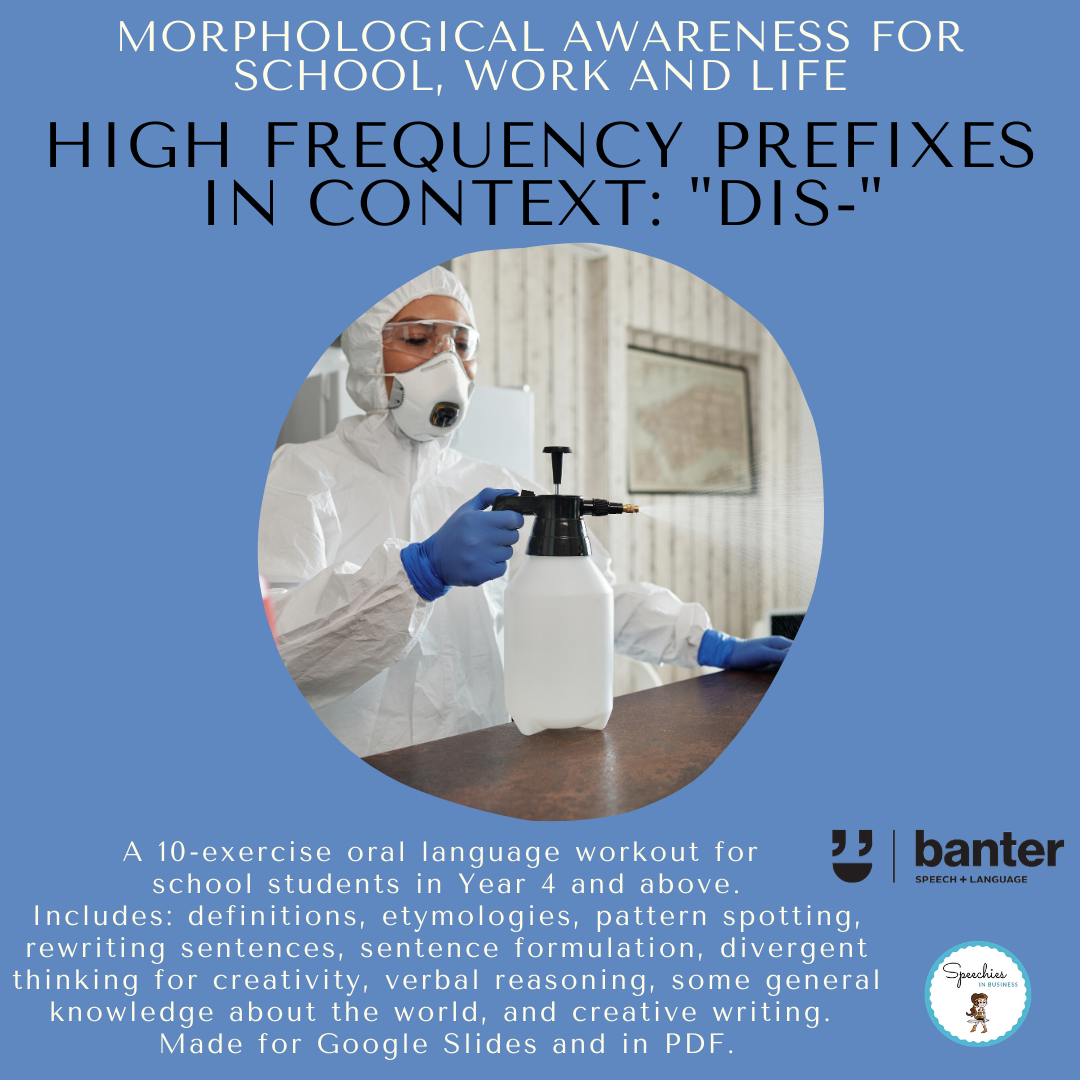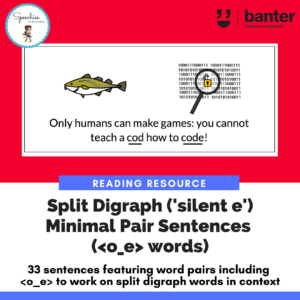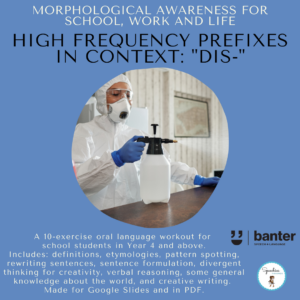(R603) High Frequency Prefixes for Reading and Writing: “Dis-“
$6.99 including GST
In this 19-page resource, we teach students that the prefix “dis-” means “lack of”, “opposite” and “apart, away”.
It contains 10 activities designed to teach and consolidate this knowledge. Activities include:
- teaching the definition and etymology of the prefix, “dis-”, for comprehension and spelling;
- a procedural word learning writing activity;
- auditory bombardment – listening to “dis-” words in sentence context;
- a highlighting activity: spotting the prefix in sentences;
- a sentence rewriting exercise requiring students to replace words with a word using the “dis-” prefix;
- a sentence formulation exercise with semantic constraints: making original sentences using words with a “dis-” prefix;
- a divergent naming exercise: creative thinking using words with “dis-” prefixes;
- a general knowledge investigation;
- a verbal reasoning/persuasive writing exercise: generating pros and cons for arguments including “dis-” words; and
- a story-making exercise with “dis-” words.
This resource is one of nine modules covering the most frequent prefixes uses in English. Fully scripted, the module is is suitable for one-to-one, small group and whole class instruction; and can be downloaded in PDF and Google Slides format.
Description
To read well, students need to learn:
- alphabet decoding: including phonological awareness skills such as letter-sound links and how to blend speech sounds together to make words;
- fluent word reading: including gaining access to the meaning of words directly from the spelling without needing to decode them phonically, including through experience, morphological awareness and motivated reading; and
- text comprehension, including by increasing vocabulary, background knowledge, semantic networks, inference-making skills, higher level language skills, comprehension monitoring skills, sentence processing, and knowledge of text types, such as story grammar (Castles et al., 2018).
A growing body of research suggests we can help struggling readers with “morphological awareness training” (e.g. McLeod & Apel, 2015; Bowers et al., 2010). Morphological awareness is the skill of consciously thinking about and manipulating morphemes (McLeod & Apel, 2015).
Morphemes include:
- bases (e.g. “speak”); and
- add-on bits (aka affixes), including prefixes (e.g. “un-”) and suffixes (e.g. “-able”).
So, for example, the word “unspeakable” is made up of three morphemes: un-speak-able.
The high frequency prefix “dis-“
In English, just nine prefixes account for 75% of words that use a prefix.
~~~~~~~~~~~~~~~~~~~~~~~~~~~~~~~~~~~~~~~~~~~~~~~~~~~~~~~~~~~~~~~~~~~~~~~
In this resource, we teach students that the prefix “dis-” means “lack of”, “opposite” and “apart, away”.
It contains 10 activities designed to teach and consolidate this knowledge. Activities include:
- teaching the definition and etymology of the prefix, “dis-”, for comprehension and spelling;
- a procedural word learning writing activity;
- auditory bombardment – listening to “dis-” words in sentence context;
- a highlighting activity: spotting the prefix in sentences;
- a sentence rewriting exercise requiring students to replace words with a word using the “dis-” prefix;
- a sentence formulation exercise with semantic constraints: making original sentences using words with a “dis-” prefix;
- a divergent naming exercise: creative thinking using words with “dis-” prefixes;
- a general knowledge investigation;
- a verbal reasoning/persuasive writing exercise: generating pros and cons for arguments including “dis-” words; and
- a story-making exercise with “dis-” words.
This resource is one of nine modules covering the most frequent prefixes uses in English. Fully scripted, the module is is suitable for one-to-one, small group and whole class instruction; and can be downloaded in PDF and Google Slides format.
~~~~~~~~~~~~~~~~~~~~~~~~~~~~~~~~~~~~~~~~~~~~~~~~~~~~~~~~~~~~~~~~~~~~~~~~
Evidence suggests that students first gain awareness of the written forms of prefixes in around Year 2 (Apel et al., 2013). The activities in these resources are suitable for typically developing students in Year 4. They are also suitable for gifted younger students, and older students with language, learning, reading and/or writing difficulties.
For more evidence-based information about morphological awareness training, read our article “What else helps struggling readers: the evidence for morphological awareness training“.










